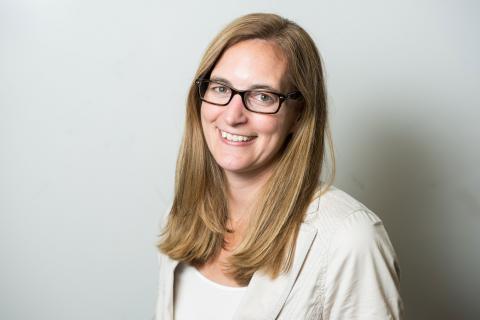New Designs for School
Blended Learning Model Types of NGLC Breakthrough Schools
Topics

We’ve all had the experience of truly purposeful, authentic learning and know how valuable it is. Educators are taking the best of what we know about learning, student support, effective instruction, and interpersonal skill-building to completely reimagine schools so that students experience that kind of purposeful learning all day, every day.
How next gen schools incorporate blended learning to personalize learning for students depends on their mission, culture, and learning philosophy.
Next gen schools are incorporating blended learning in their models in order to personalize learning for students. But their choice of how to blend face-to-face and online learning depends on their mission, culture, and learning philosophy.
We recently worked with the 27 K-12 breakthrough model schools that received grants from NGLC to classify their model of blended learning according to the Christensen Institute’s typology: Lab Rotation, Station Rotation, Flipped Classroom, Individual Rotation, Flex, A La Carte, or Enriched Virtual. This info is recorded in their grantee profiles, and here’s a breakdown for the group:
| Blend Type | # |
| Flex | 11 |
| Station Rotation | 9 |
| Lab Rotation | 5 |
| A La Carte | 5 |
| Individual Rotation | 2 |
| Rotation | 1 |
| Flipped Classroom | 1 |
| Extended Virtual/Experiential | 1 |
Flex and Station Rotation are by far the most popular blended types for NGLC schools.
The Flex blended type—in which students’ learning experiences are individualized (think playlists) and teachers provide support as needed—necessarily requires instructional staff to work differently than they would in a traditional classroom. When we tracked other key features of the school models as described in their profiles, we found that seven of eight schools that emphasize next gen staffing use Flex (see Touchstone Education, Intrinsic Schools, and MATCH Education). Schools emphasize next gen staffing when they incorporate differentiated instructional roles (tutors, master teachers, etc.) or integrate new forms of professional development (team-teaching, extended PD calendars, PD time to integrate online and face-to-face learning, etc.).
For solid implementation of Station Rotation models, see Alpha Public Schools, Aspire Public Schools, and Lebanon School District.
Eight NGLC breakthrough model schools use more than one approach to blended learning.
In Which blended model should K-12 schools choose?, Heather Staker of the Christensen Institute argued that the best blended learning models seize two types of opportunities—sustaining AND disruptive models. Sustaining models improve the existing classroom system (think Station Rotation, Lab Rotation, and Flipped Classrooms) and disruptive models transform the classroom both physically and pedagogically (think Individual Rotation, Flex, A La Carte, and Enriched Virtual).
The eight NGLC schools are in general combining A La Carte with one of the Rotation models or combining Station Rotation with Flex. The schools use the two types in different grade levels or subject areas, or to support interdisciplinary project-based learning. Da Vinci Schools (Flipped Classroom and Lab Rotation), Schools For the Future (Individual Rotation and A La Carte), and Danville Independent Schools (Lab Rotation and A La Carte) are just three examples of models that utilize more than one blended type.
Some blended learning approaches defy typing.
Virtual Learning Academy Charter School’s VLACS Aspire is the only model in NGLC’s portfolio that can be classified as Extended Virtual. In its redesign, the virtual school is integrating face-to-face learning that comes from internships and service-learning as well as classroom-based experiences. As a result, the VLACS Aspire model pushes the envelope on the Christensen blended typology. The school leaders are even proposing a new type that they label “Experiential.” Their approach has been challenging my own understanding of what blended learning means by disrupting the boundaries of where face-to-face learning can happen.
It was also a challenge for other breakthrough models to classify their approach to blended learning. Sometimes, their organically developed models did not fit squarely within one type. The USC Hybrid High model, for example, could not be classified more specifically beyond Rotation, which includes the sub-models Station Rotation, Lab Rotation, Flipped Classroom, and Individual Rotation.
District schools tend to use sustaining blended types.
Most district schools in the NGLC portfolio are wading into blended learning with Station Rotation and Lab Rotation approaches (see Horry County Schools and Fayette County Public Schools). These Rotation models can more easily fit into the traditional school day, classroom, and teaching staff structure. That makes sense for districts that are transforming existing schools and need the support of school personnel, students and their parents, and the local community. The districts also need to adhere to state policies and collective bargaining rules that may be barriers to more disruptive blended approaches.
Interestingly, though, three of the five schools using A La Carte are district schools (Fayette, Danville, and the Workshop School in Philadelphia)—suggesting these districts are finding ways to adopt more disruptive options.
The Education Achievement Authority of Michigan and Matchbook Learning (in partnership with EAA) are the two district-based grantees using the Flex model. EAA was given the charge to turnaround the lowest five percent of schools across the state—with the expectation that they would develop and implement a new approach to schooling. And they have done just that with their student-centered learning model and the intense support they provide school staff to be effective educators in this disruptive environment.




